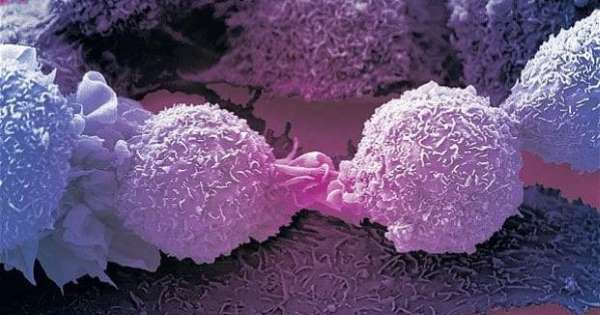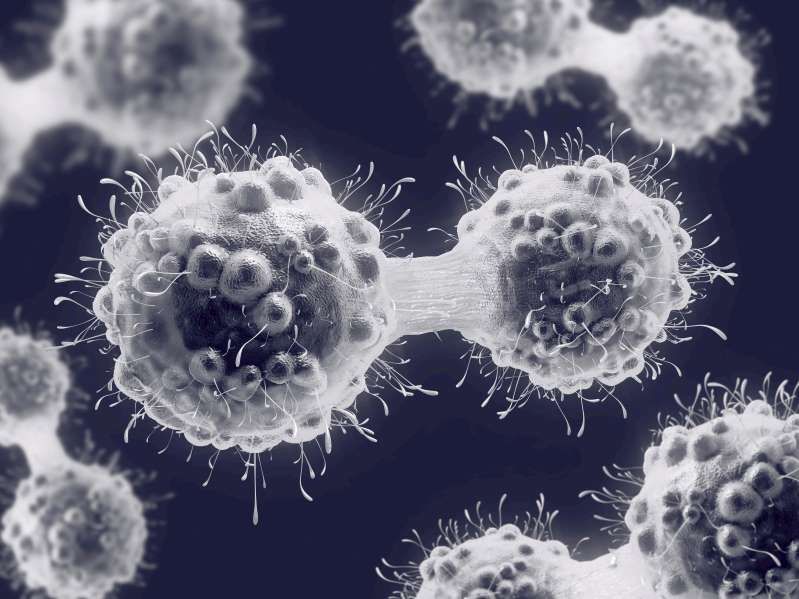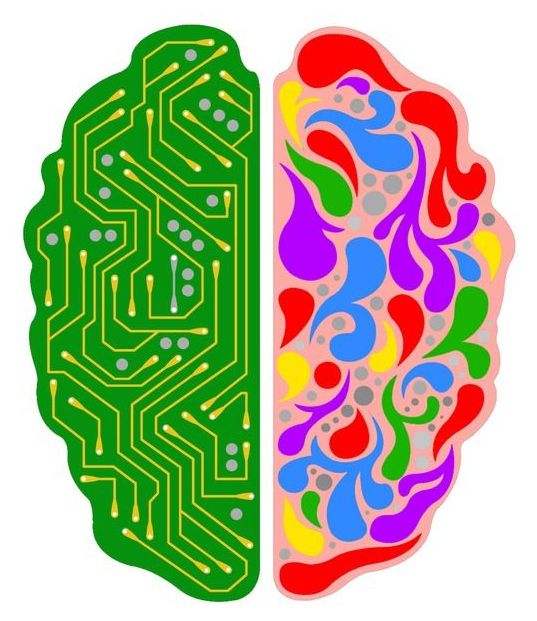This invention helps people put on their socks without bending down.
Category: innovation – Page 188

Immune cell which kills most cancers discovered by accident by British scientists in major breakthrough
 3D illustration of a cancer cell in the process of mitosis. A new type of immune cell which kills most cancers has been discovered by accident by British scientists, in a finding which could herald a major breakthrough in treatment.
3D illustration of a cancer cell in the process of mitosis. A new type of immune cell which kills most cancers has been discovered by accident by British scientists, in a finding which could herald a major breakthrough in treatment.
Researchers at Cardiff University were analysing blood from a bank in Wales, looking for immune cells that could fight bacteria, when they found an entirely new type of T-cell.
That new immune cell carries a never-before-seen receptor which acts like a grappling hook, latching on to most human cancers, while ignoring healthy cells.

Crystal creates a supercontinuum breakthrough
Researchers have generated a wide range of colors from a single laser after discovering a new process for achieving so-called “supercontinuum generation.”
Supercontinuum generation is when intense laser light of one color travels within a material, like glass, and broadens into a spectrum of colors.
The effect lets scientists produce light at colors tailored to particular applications in sectors like bioimaging, optical communications and fundamental studies of materials.

Researchers create the Jimi Hendrix of lasers
Photonics experts at Heriot-Watt university are hailing a breakthrough in laser research.
They have come up with a new and relatively inexpensive way of creating a laser supercontinuum.
They hope it could eventually have applications in bio-imaging and optical communications.
Generation of a supercontinuum happens when intense laser light of a single colour travels through a material and then broadens into a spectrum of colours.

How do human beings co-live with AI in the future?
How do human beings co-live with #AI in the #future? https://bit.ly/39BkOXe “Artificial intelligence (AI) has triggered many concerns and discussions in recent years, and through these discussions people are prompted to introspect on what it really means to be a human being …” #technology #innovation
Artificial intelligence (AI) has triggered many concerns and discussions in recent years, and through these discussions people are prompted to introspect on what it really means to be a human being. It provides us with plenty of food for thought regarding our science, society, family, work, etc., and all of these raise an important inquiry: how is life going to be with artificial intelligence being around us?
Coronavirus expert: ‘War is an appropriate analogy’
CEO of the Coalition for Epidemic Preparedness Innovations Dr Richard Hatchett explains the long-term dangers of the Covid-19 coronavirus — saying it’s the scariest outbreak he’s dealt with in his 20-year career. (Subscribe: https://bit.ly/C4_News_Subscribe)
——
Get more news at our site — https://www.channel4.com/news/
Follow us:
Facebook — https://www.facebook.com/Channel4News/
Twitter — https://twitter.com/Channel4News


Our eye movements help us retrieve memories, suggests new study
In a recent study, scientists at Baycrest’s Rotman Research Institute (RRI) found that research participants moved their eyes to determine whether they had seen an image before, and that their eye movement patterns could predict mistakes in memory. They obtained these results using an innovative new eye tracking technique they developed.
“Our findings indicate that eye movements play a functional role in memory retrieval,” says Dr. Jennifer Ryan, senior scientist at the RRI and Canada Research Chair in Cognitive Neuroscience of Memory. “They can tell us a lot about someone’s memory.”
This study builds on previous Baycrest research examining the link between eye movements and memory, including the role of our eye movements in memorization and the weakening connection between our eye movements and our brain activity as we age.

NASA issues a Venus rover design challenge
Artist’s concept of the AREE Venus rover. The rover would be wind-powered and able to last on Venus’ hellish surface much longer than previous landers. Image via NASA/ JPL-Caltech.
There’ve been missions to Venus over the past decades, but Venus is a tough place to visit, with temperatures on its surface hot enough to melt lead. The last probe that landed on Venus’ hellish surface was part of the Vega 2 mission in 1985; it transmitted data from Venus’ surface for 57 minutes. Now NASA wants to visit Venus’ surface again, not with just another lander … but with a rover.
On February 21, 2020, NASA announced a public challenge to help design a future Venus rover called Automaton Rover for Extreme Environments (AREE). The challenge – Exploring Hell: Avoiding Obstacles on a Clockwork Rover – is specifically to develop an obstacle-avoidance sensor for the rover. The concept is being funded by a grant from the NASA Innovative Advanced Concepts program.
Trauma stays in the body, it can have long term consequences on our baselines nervous system, it can make us hyper-vigilant and wired for anxiety
We call this PTSD. The question is whether we can reprogram our nervous system? In Stealing Fire, authors Steven Kotler and Jamie Wheal discussed advances in psychology, technology, neurobiology and pharmacology — and whether they help us map healthy nervous systems? Can we then use that data and create new designer compounds to recalibrate the nervous systems of those suffering from PTSD? Can we tweak our nervous systems for human flourishing? I hope so. Recent breakthrough in MDMA psychotherapy might be only a taste of what’s to come. Filmed and toned by @j.elon.goodman ||@mapsnews @mapscanada @meetdelic @psychedelicsocietysf #psychedelics @synthesisrtrt #mentalhealth #creativity #depression #anxiety #psychotherapy #therapy #inspiration #motivation